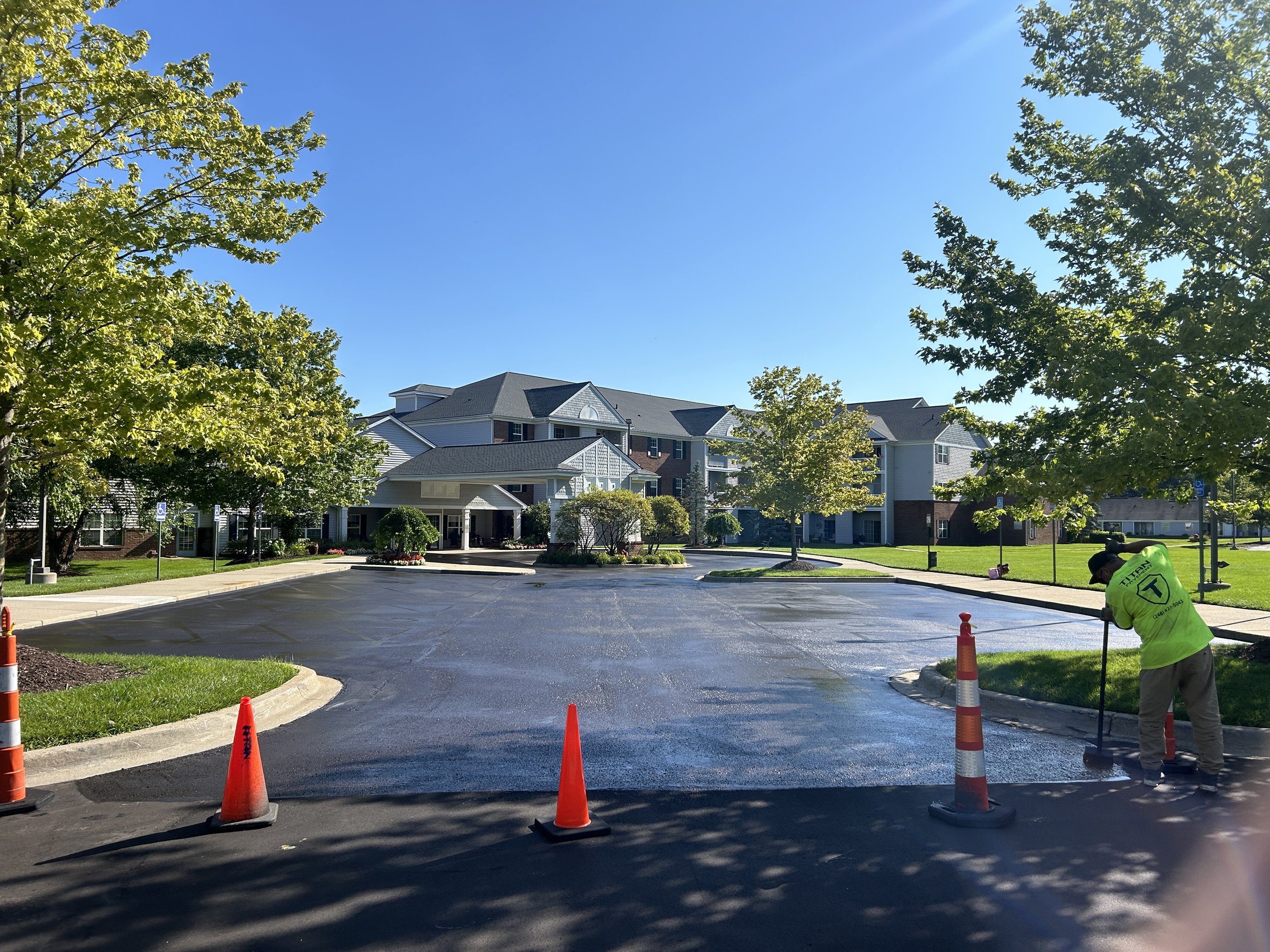Shield your investment and preserve your paved surface by maintaining throughout the year. An asphalt driveway or parking lot doesn't stay pristine forever. Stains, cracks and potholes can all make an asphalt surface look run-down and structurally compromise the asphalt maintenance.
Spring Asphalt Maintenance
With temperature fluctuations, consider planning your asphalt maintenance for spring. Spring is a great time to inspect your asphalt for damage that might be leftover from winter. This is when you can call Titan Pavement for your free estimate, to come note all cracks, potholes, or standing water.
Summer Asphalt Maintenance
Summer is the best time for:
Resurfacing
Crackfilling
Pothole Repairs
Sealcoating
Asphalt Replacing
Line Striping
In the summertime, the hot sun can fade your asphalt from that fresh black to a dull grey over time. Asphalt Sealcoating can help prevent this type of UV damage. Book your sealcoating services with Titan pavement as soon as possible.
Fall Asphalt Maintenance
As temperatures are starting to cool, you'll want to finish any asphalt maintenance before winter sits in. The freeze-thaw cycle can worsen any existing damage. Sealcoating can help protect your asphalt surface from moisture damage throughout the winter months. Scheduling always fills up so do this in the spring to summer months.
Don't wait until it's too late to maintain your asphalt surfaces!
Winter Asphalt Maintenance
Winter weather doesn't allow asphalt maintenance like sealcoating or laying hot asphalt, but shielding the surface still continues. We highly recommend a de-icer instead of a rock salt in the winter months. Rock salt can trap water, freeze and expand creating cracks, shorten lifespan, fade color, ruin grass and have effects on environment and wildlife.
Request a complimentary estimate with titan Pavement, we are ready to help make your yearly maintenance as easy as possible!










